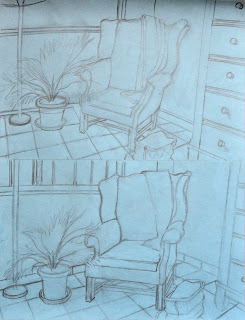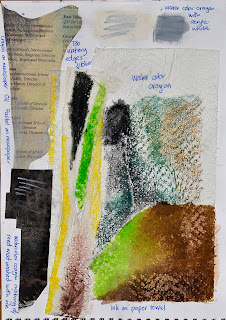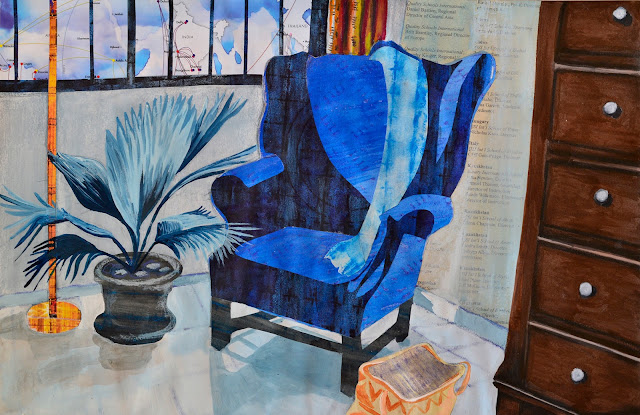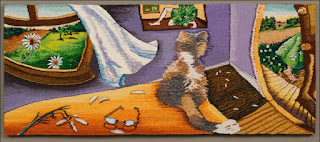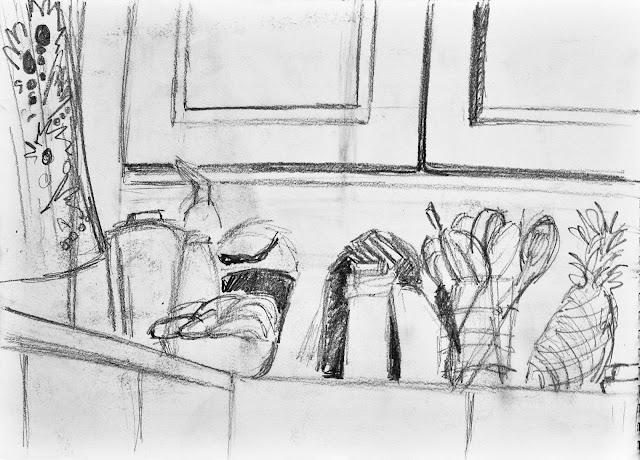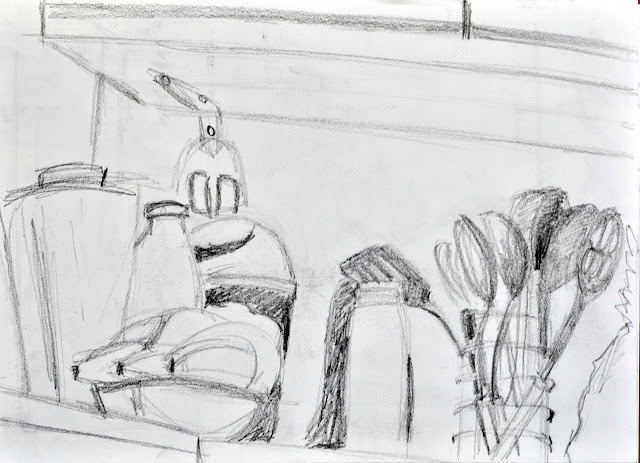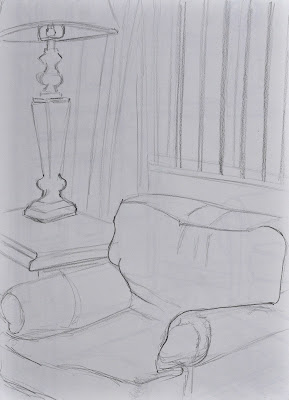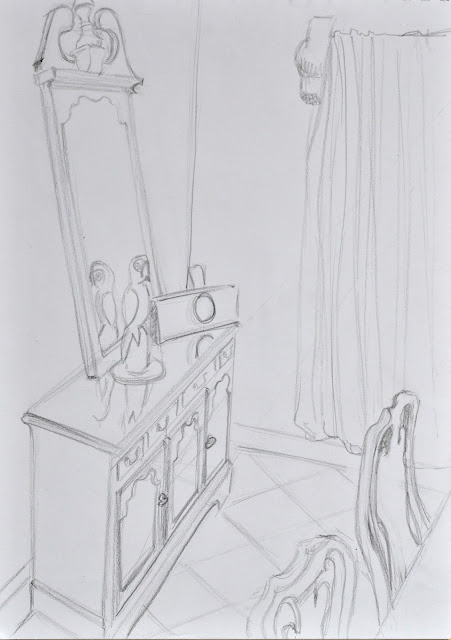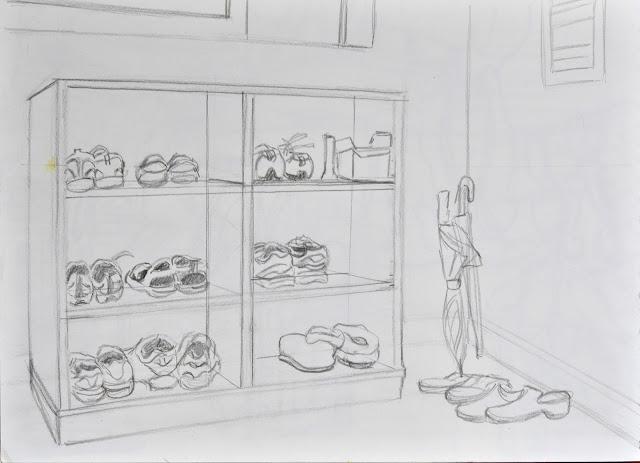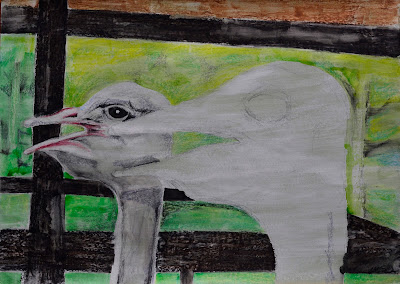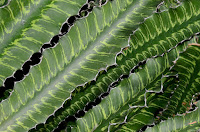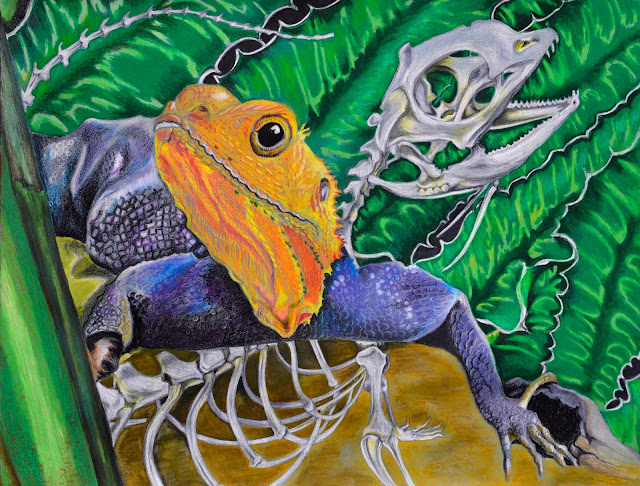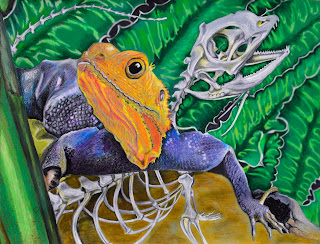 My understanding of the brief:
My understanding of the brief:
Create a finely observed drawing of either a “still life, animal study or interior – or a combination of any or all of these” which shows “some of the skills and knowledge gained” throughout the course (Khatir, 2014).
As I thoroughly enjoyed working on the animal studies section of this unit, I decided to focus on an animal study. I find the diversity of textures and the possibilities for using mixed media, in an animal study very appealing.
Since coming to Benin, I have been drawn to the many small creatures that scuttle about the pathways. I also often find the bodies of the various moths that inhabit this area very interesting. Their fuzzy textures and delicate details intrigue me. Over the past few weeks, I have collected a number of moths I have found in our stairwell. Ever since I started this collection, I have wanted to draw them. I presume that these are actually moths as they were found after dark, but on studying it further on the internet, I am not so sure. Any case, I decided that they would make a suitable subject for my final assignment.
As their colors were subtle and reminded me a lot of the colors of my perfume bottles, I experimented with varying arrangements of perfume bottles and my two best looking moths. The connection between the two subject matters also seemed appropriate as moths have such a brief mating period that they rely on their pheromones to help attract a mate. Studies have shown that humans are likewise attracted to the particularly qualities of a scent of another person. Perfumes add a further layer of enhancement to the already present olfactory messages.
Initially, my idea was to have the bottles fill the picture plane with the moths at their base, however, as I played with composition ideas using my husband’s camera, I discovered that it was far more intriguing and creative to have the moths fill the picture plane with the bottles serving as an abstract backdrop. Without zooming in, the pictures appeared more like a strange advertisement for perfume – an association I did not wish to make. Using the two very dead moths as the focus of attention, however, created a more puzzling image. People don’t usually spend hours depicting dead moths. My friend even found the idea of my desire to draw them rather creepy. This in some ways added to the appeal of the subject. We are surrounded by the cycle of life, death and decay, why not take notice of it and in a sense celebrate it.
 |
| Contact Sheet 1 Showing Composition Experiments |
 |
| Contact Sheet 2 Showing Final Compositional Choices |
 |
| Photograph of Final Composition Choice |
I eventually discovered a composition I liked with the two moths set one behind the other, and the perfume bottles creating an abstract wall behind them. The reflections on the table were also captivating, as they added to the sense of mystery and almost a sense of foreboding in the shadows. As the moths are small and a lot of their detail is lost when looking at them through my multi-focal lenses, I had my husband help to take some close-up views, focussing on the wings, and then on the feet. This enabled me to study the texture in finer detail. I used the actually moths to help keep my perspective and coloring related to what they look like to the naked eye.
I decided to stay with an A3 format for this work, as I will eventually have to post it from Benin for submission, so the smaller size is more appropriate. However, I also thought that the fine details of the moths needed an intricately executed study.
Usually I start with the main subject and then have to try to come up with a background. This time around, I tried to have the background in mind from the start. I decided also to start with the bottles in the top panel of the drawing so that I would not be working on freshly worked surfaces. I explored how to indicate the writing on the perfume bottle in reverse by using tracing paper and various sketchbook studies. I used watercolor pencils and aquarelle fine markers for the bottles. I liked the complexity of the reflections and the way two simple bottles could create an interesting abstract effect.
 |
| Aqaurela pencils, crayons and marker experimentation - Sketchbook |
 |
| Signage practice from Sketchbook |
 |
| Close-up of Perfume Bottles |
 |
| Background moth detail |
After working on the bottles, I concentrated on the moth in the background. My guess is that it might be a Coryndon's Polyptychus. Once again, I used watercolor pencils, aquarelle fine markers and a range of drawing pencils. It was quite sad to note how the bottom eye of this moth had been poked in. I think my depiction of this adds to the evocative feel of the drawing.
The next stage was to experiment with the textures of the wings. After having collaged textures into my indoor studies, I had a desire to create layers of texture in the wings to replicate the extremely complex textures of the wings of the moth. I tried a variety of surfaces and effects, but eventually settled for using my circular, woven reed mat to create an orange rubbing with watercolor crayons. I then washed this with brown Bombay ink. For the lighter yellow areas of the wings, I used yellow Crayola crayon over the back of a ribbed palm leaf. I then washed a diluted wash of yellow over a page for the back wing, and the concentrated yellow Bombay ink of the front wing.
 |
| Frottage and Reflections Practice - Sketchbook |
 |
| Wings Texture Practice - Sketchbook |
I experimented with paper tearing versus paper cutting. I decided that on the wing, tearing the paper created a more natural fuzzy transition between the dark brown zone and the yellow zone, whereas the hard edge of the cut paper was more suitable for the edge contours of the wing form.
Once applied onto the artwork, I worked the wing further using watercolor crayons, concentrated liquid watercolor paints, and washes of Bombay ink and watercolor. I was particularly pleased with the layered effect I was able to create using the collaged papers and mixed media. The orange touches of the rubbing add a pleasing layer to the texture.
I then went on to work the lower wing. This proved to be a bit more challenging as the ribbed edges created by the rubbing did not follow the curves of the wing completely. At the time, I decided that the lines approximated the ribs in the wings near enough. However, when adding the final touches, I reflected that it would have probably been better rather to ignore the rubbings where they did not follow the contours properly. I decided to only attach the lower wing once I had worked on the initial body layers.
 |
| Wing before collaging it in place |
Because the moth has lots of fine hairs that project into the negative space, I decide to complete the rest of the background before working the head, abdomen, and legs of the moth. I practiced the intense deep purply- black shape of the shadow on the table in my sketchbook. I eventually worked out the shade that situated the drawing best and applied it in a swathe across the entire shape of the shadow. I also worked this color into the shadow under the moth in the background. Where I ran into a problem was that when applied to a large area, the pigment ink I was using did not dry completely – in fact it took days to dry completely. As I was working with a time-crunch and had a small window of two days to complete this assignment, before life became frenetic once again, I had to keep on working, but it was difficult to not get the ink smudged.
I went on and completed the rest of the background using watercolor pencils and watercolor crayons. The reflections from the bottles left a lot of areas tinted with turquoise and light blues, which contrasted quite nicely with the oranges of the moth in the foreground. The deep purply-black also contrasted well with the yellows in the drawing.
My final challenge was the moth in the foreground. The foreshortening on the legs and mouth area proved to be quite challenging. I was pleased to have photographs to work with to help me to analyze these areas. I love the way you can see its long curled up tongue. I laid down varying zones of shaded yellow ink to form the base of the body, legs, and head of the moth. I then worked watercolor pencils, aquarelle markers, watercolor crayons, Bombay ink details, and concentrated liquid watercolor paint onto this portion to imitate the complex, fine feathering of the surfaces. I tried to leave the feathering of the white relatively thick to add to the layering effect of the textures. I then used crayons on the deep shadow around the moths to indicate the reflections visible in the table’s surface. My husband particularly liked the eerie feeling that these slight suggestions of form add to the overall mood of the artwork.
At this stage, I thought I was finished, photographed my progress, and packed up my supplies. However, after living with the drawing a while, I came to realize that the forms around the thorax and wing area were very disproportional. This bugged me, and I tried to analyze what had gone wrong. I realized that I had interpreted an area as being part of the wing, when in fact it was part of the reflections in the background. I also realized that the wing tucks up in folds at its base, and does not appear flat, as I was portraying it. The shadow I had drawn of where the wing meets the abdomen was also wrongly shaped, adding to the general contortion of the form.
 |
| Initial drawing before alterations |
As I had run out of available time to rework parts of my drawing, I had to leave it on hold a few days.
Today, I studied the areas that were frustrating me and tried to figure out how I could rework it without having to totally start from scratch on a separate page and then collage it on. As anything glued in the heat and humidity of this Benin buckles and crinkles, I did not want to have to stick yet another layer onto my existing layers. I realized that I needed to lighten in the strip immediately beneath the lower wing and the abdomen, adding blue to it to make it look like the reflections found in the background. I was able to do this fairly successfully. I then reworked the abdomen area with layers of liquid watercolor paint to alter the marker lines I had previously drawn in. I then added some dark brown and black to the lowest section of the wing, and strengthened the shadows of each ridge of the wing. I added some more fluffy lines to the highly textured areas around the confluence of the wing and abdomen.
 |
| Final Drawing |
When viewing the two photographs of my initial drawing and the final drawing side by side in Photoshop, I think that the thin sliver of bluey background seen through the gap between the wing and the abdomen helps to direct one's eye to the head of the moth in the foreground. So, these slight changes might well have helped to tighten up the composition.
Assessment Criteria
Demonstrations of technical and visual skill
For this artwork, I chose to use A3 size white paper with a mixture of media: watercolor pencils, markers, liquid paints, and crayons, Bombay inks, drawing pencils and oil pastels. I feel that I have been able to use a variety of hues, tones, and tints to suggest the forms of the composition. I think that I have made good use of contrast to add interest to the drawing. My final touches were to add further contrast to the foreground wing, making it less flat looking.
My drawing shows an awareness of the varying textures found in this composition. I think I have successfully portrayed the wispy hairiness of the feathers on the moths, in contrast to the glassy reflective surfaces of the bottles and the tabletop.
I have also tried to play with the composition slightly. There is a tension between the head of the moth in the foreground, which gets the main attention due to the directional forces of the lines of the wings, the large dark shadow underscoring it, and the larger more centrally placed head of the background moth. In many ways you want to settle on looking at the background moth, but as it is cutoff by the foreground moth, your eye continues to move down towards the head of the foreground moth.
Quality of Outcome
I have endeavored to apply the knowledge I have gained over the course of this unit of study. I have never used collage in a drawing before. I enjoyed the layered effect it created to have crayon rubbings applied with ink overlays. This is certainly a new technique for me since commencing this unit.
As many of the projects had you experimenting with color, I have also gained a better feel for working with color. I think that the predominantly harmonious yellow through turquoise color scheme, with its neutral base of browns and creams, creates a warm subtle mix of hues, contrasted by the purple undertones of the shadows.
Demonstration of creativity
I feel that the subject matter is certainly different: it is not your usual pretty arrangement of flowers or fruit, or for that matter a traditional animal study. I think that I have contrasted the very dead-looking moths with the abstract created by the perfume bottles, creating an intriguing juxtaposition.
Context Reflection
In retrospect, the ridges of my rubbing should not have dictated the shape of the lines of the lower wing. If I were to do this drawing again, I would have changed this one area.
There are areas where I feel that my proportions in particularly the wings and areas of the abdomen of the foreground moth could have been more realistically portrayed. It is hard to get the balance between expression and realism. If I had had more time to work on this assignment, and not been so far over the two-month period allocated for the completion of units, I think that my work could have benefitted from more preliminary practice studies and sketches.
However, overall, I know that I have been stretched during this unit; especially in the area of working with proportions, perspective, and foreshortening. The unit required a vast range of projects and was very time consuming, but I know that I have gained mixed media skills and have heightened my awareness of structural forms and lines, increasing my ability to portray and interpret my subject matter.
Work Cited
Khatir, L., 2014. Drawing 1. Barnsley: Open College of the Arts.
















